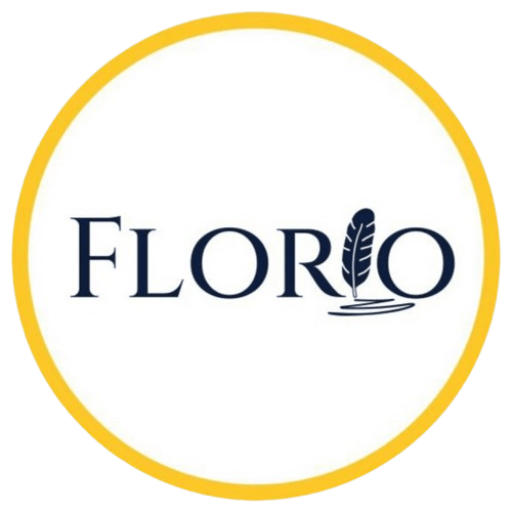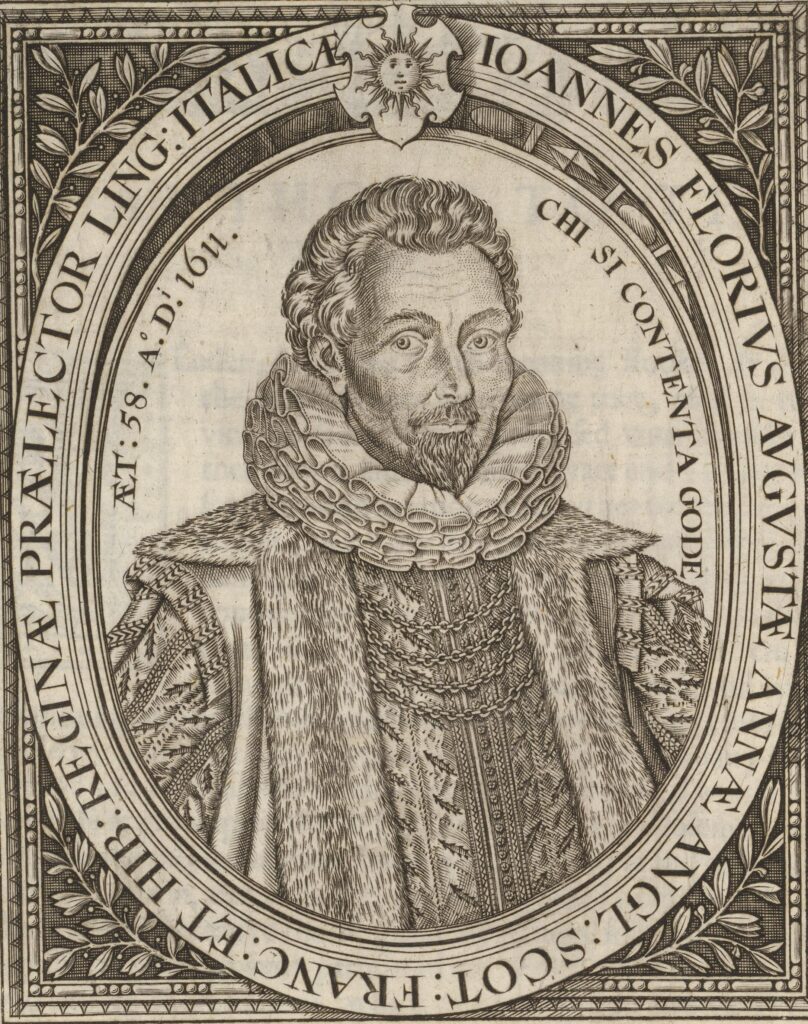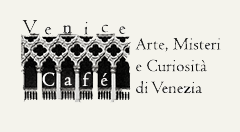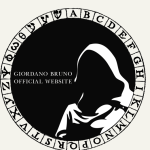Michelangelo Florio, born in Figline Val D’arno (Florence) was a Franciscan friar who converted to Protestantism. He worked as pastor in both England and Switzerland. Tutor of Lady Jane Gray, writer and translator, Michelangelo Florio was an important Protestant reformer whose life and works had a major influence on John Florio.
John Florio was born in London 1 in 1553. 2 His father was Michelangelo Florio, an exponent of the Reformation with a biblical and humanistic culture. He was a Franciscan friar who converted to Protestantism and later arrested for heresy. Following two years of imprisonment in Rome, he was brought to trial and condemned to death. However, he managed to avoid execution by escaping from prison on 4 May 1550. Subsequently, he abandoned his Franciscan habit, moving to Venice, where he established contact with the English ambassador. Florio was a fervent protestant with Jew ancestors. In fact, in his book Apologia, he explained that:
“I was never a Jew nor son of a Jew but born of a father and mother baptized as Papists like yourself; and if you should say that my ancestors were Hebrews before baptism, this I will not deny…” 3
Michelangelo Florio in London
Michelangelo Florio arrived in London on 1 November 1550. He was soon appointed to be the preacher of the Italian Church, established under the superintendence of John Alasco. Firstly, the members of the Italian congregations provided him with a house and a yearly salary. In addition, he received 20 pounds granted him by the King through the good offices of William Cecil. Nevertheless, Michelangelo soon fell of his Italian flock, most of whom were merchants and artisans. They resented his violent attacks on the Pope and the Church of Rome. Consequently, they ceased to attend services to pay him his allowance.
Michelangelo vs Italian Congregation
Two letters that Michelangelo wrote to Cecil reveal his hostility towards the Italian congregation. During this time of trouble, Cecil received him into his house. The letters, in Latin, written in 1551, are reported in John Strype’s work, Memorials of the Most Reverend Father in God Thomas Cranmer (1694). Michelangelo proves to be very impulsive and drastic towards some of his parishioners. In fact, he points out that the Italian congregation does not respect the obligation to bestow him his allowance. Moreover, they dare to “speak ill of him and of the Gospel”, having also resumed attending Catholic mass. As a result, in his letter, Michelangelo does not hesitate to denounce (with a list of names and surnames) 14 of his parishioners.
John Florio’s mother
There are no traces of John’s mother. Some scholars seem to agree that she was probably English, given John’s knowledge of the language. But in First Fruites (1578), Florio wrote that the first time he arrived in London he didn’t know the language. In fact, he asked in Italian and French were the post dwelt. He explained later that he learnt the language by reading books. However, Miss Yates quotes a note written by Simmler in Michelangelo Florio’s Apologia in which he wrote:
“De uxore, quae Angla Videtur, et liberi nihil constat.” (“About his wife, it seems she was English and unmarried.) 4
We have very few informations about her, and only through Michelangelo’s turbulent personal life in London.
An act of fornification
In contrast, Michelangelo’s denounce against the Italian congregation, quickly turned against himself. In 1552, in fact, during his stay at Cecil’s house, they accused him of “an act of fornication” with an unnamed woman of the Italian congregation, a servant in Cecil’s house. Consequently, Cecil condemned him to go through a form of public penance and depose from his ministry. The documents reveal that he had a sexual relationship with a woman outside the marriage. However, Michelangelo wrote him a letter on January 23 1552. His intention was to explain Cecil:
“The affair, as it really is, and not like the unclean mouths of any impudent dared to throw up”. 5
Nevertheless, thanks to Michelangelo’s skilfully argued letter, he was able to recover Cecil’s favour.
John Florio born in 1552?
It has been suggested by Florio’s scholars Yates 6 that John was not born in 1553 as generally reported, but in 1552, precisely after the scandalous “ act of fornication”. For the sake of clarity, Yates, after having argued that “John’s age is given on his portrait as fifty-eight in 1611, making the birth-year 1553”, in the following pages, does not seem to be at all persuaded by this opinion, since she states (in a footnote) that “Florio may have deliberately given misleading information as to his origin in order to cloak the scandal connected with his birth” [i. e. that Florio was willing to cancel the unpleasant fact that he was the fruit of an “act of fornication”].
Michelangelo’s pupil: Lady Jane Grey
Michelangelo’s subsequent career in London was less agitated. He worked on translations while teaching Italian. Moreover, he probably knew, and may even have taught, the future Queen Elizabeth. As a member of the household of the Duke of Suffolk, he came into close contact with Lady Jane Grey. He became her tutor until the last days of her life, teaching her Italian and Latin. Later, he dedicated to her a book of grammar, the Regole et Institutioni della Lingua Thoscana. He also wrote Historia de la vita e de la morte de l’Illustriss. Signora Giovanna Graia published later in 1607. The book reports the persecutions suffered by the English Protestants during the reign of Mary Tudor, “Bloody Mary”. In the Preface of the book, in fact, the anonymous publisher explained that:
“The original of this book was written by his own hand by the author (Michelangelo Florio). It was found, after his death, in the home of an honored and great benefactor. (..)
I did not want, as a depositary of the will of the author, to fail to fulfill this wish. He would certainly have had this book published if he had not been prevented from very cruel persecutions. He in fact deposed it for fifty years in safe hands.” 7
The Ascension of Mary Tudor: Michelangelo and John Florio’s escape from London
When Mary Tudor ascended to the throne in 1554, she re-established Catholicism in England and Ireland. In February 1554, a royal edict proclaimed that all strangers had to avoid the realm within twenty-four days. Consequently, on the 4th of March 1554, Michelangelo and his family left England. In his Apologia Michelangelo recount his escape with John:
“…Where we were until March 4, 1554. And there left me with my little family I came to Anversa in Alemagna. And I went to Argentina (Strasbourg) for May 6th 1555.”8
Florio family in Strasbourg
Michelangelo, along with John went through Antwerp into Germany, staying in Strasbourg (Argentina) until the 6th of May, 1555. In this city the generous citizens offered themselves to give a first temporary refuge to the exiles for twenty days. Moreover, Michelangelo Florio had a first meeting with the noble Frederik von Salis, coming from Soglio. He invited Michelangelo to become pastor of the Reformed Evangelical Church of Graubünden in Soglio. 9 Subsequently, Michelangelo and his family departed again and arrived in Soglio on 27th of May 1555, when John was 3 years old. In Apologia Michelangelo wrote that when they arrived:
“Sufficient living is provided for myself and for my little family.” 10
Michelangelo and John Florio in Soglio
Florio, with his family, arrived in Soglio on May 27th. This tiny village of Val Bregaglia had embraced the reformed doctrines. Furthermore, the Grisons canton included the Valtellina, the nearest place for Italians who escaped from Inquisition. That’s where John Florio grew up: in a large house in front of his father’s church. In the first years of his infancy, he lived a modest, humble life. While working as pastor and notary, Michelangelo educated John in an environment rich in religious and theological ferment. In addition, he taught John Italian as well as Latin, Hebrew and Greek.
Michelangelo and “De Re Metallica”
Michelangelo Florio, in 1563 translated and published De Re Metallica. This Italian translation of Giorgio Agricola’s De re metallica (L’arte de metalli) was a fundamental work about the mining techniques. He also dedicated his work to the new Protestant Queen of England, Elizabeth I. He probably did it to pave the way for his son’s coming into England. For instance, in the Dedication he wrote:
“To the most Serene and powerful Lisabetta…that since her youngest age she endeavoured to speak my mother tongue…”11
Michelangelo Florio’s death
Michelangelo Florio died in 1566. After 1566 his name is no longer mentioned. In fact, in the synod of 1571 he is mentioned as a deceased person. Furthermore, in a letter found in the municipal library of Berne (ms. A.93.II) Girolamo Torriani defended himself by the accusation made against him in the synod of 1571 asserting that he knew Michelangelo Florio, “because the heresy of these was known only after his death.” 12 In conclusion, Luigi Firpo, in his book about Giorgio Agricola and Florio, explains that with Michelangelo’s death:
“A tumultuous and stormy existence darkly came to an end, not without intellectual vigor and combative dynamism among the many of the Italian cultural diaspora, in the great civil and religious crisis of our sixteenth century.”
John Florio in Tübingen
In 1563, at 11 years old, John Florio went to a college (Paedagogium) to be formed at Tubingen by Pier Paolo Vergerio. His tutor was an Italian Protestant reformer and Venetian university lecture, bishop of Capodistria. Moreover, Vergerio was a cultured man, well versed in modern Italian authors. In addition, he had a close friendship with John’s father. Under these circumstances, John was formed in the humanist cultural circle of Tubinga, in a strong Italianate atmosphere. During these years, he furthered his studies in Languages and Italian Literature. This was for John a fundamental period of education, travel, and formative experience, but unfortunately, he never completed his studies. Pier Paolo Vergerio, in fact, died in 1566. Without any financial and educational support, and now orphan at 14 years old, John left Tubingen. He came back temporarily to Soglio, and later departed for England.

Subscribe to receive news and updates from Resolute John Florio
Bibiography
- Aubrey, J., Brief Lives: chiefly of Contemporaries between the Years 1669 & 1696, 1898.
- Cantimori, D., Eretici italiani del Cinquecento, Torino, Einaudi, 2002.
- Florio, M., Apologia, 1557.
- Strype, J., Memorials of the Most Reverend Father in God Thomas Cranmer, 1694.
- Yates, F.A., John Florio: The Life of an Italian in Shakespeare’s England, Cambridge University Press, 1934.
Notes
- Aubrey, J., Brief Lives: chiefly of Contemporaries between the Years 1669 & 1696, 1898.
- Facing the title page to Queen’s Anna New World of Words (1611) the inscription reads: Aet: 58 A.D. 1611, Chi si Contenta Gode.
- Florio, M., Apologia, 1557, p. 13, n.2.
- Yates, F.A., John Florio The Life of an Italian in Shakespeare’s England, Cambridge University Press, 1934, p.13
- The letter, dated January 23 1552, in Latin, is reported in John Strype’s work, Memorials of the Most Reverend Father in God Thomas Cranmer (1694).
- Yates, F.A., John Florio The Life of an Italian in Shakespeare’s England, Cambridge University Press, 1934, p. 259, note 2, point (3)
- The original is in Italian as follows: L’originale di questo libro, scritto di propria mano dall’autore (Michelangelo Florio), fu trovato, dopo la morte di questi, nella casa di una persona onorata e grande benefattore. Non ho voluto, così come depositario della volontà dell’autore, mancare d’eseguire questo suo desiderio. Questo libro l’avrebbe sicuramente fatto pubblicare egli stesso se non ne fosse stato impedito da crudelissime persecuzioni. Egli infatti lo ha deposto per ben cinquant’anni in sicure mani.”
- Original text in Italian as follows:” …Dove siamo stati fino al 4 marzo 1554 e di quivi partitomi con la mia famigliola me ne venni per Anversa in Alemagna e sono stato in Argentina ( Strasburgo) per infino il 6 maggio 1555”
- Florio, M, cit., p. 108-112.
- Original text in Italian as follows: “Ci sono dati mezzi sufficienti per vivere per me e per la mia famigliuola.“
- Original text in Italian as follows: “Alla Serenissima e Potentissima Lisabetta..che infino de la Sua più giovanile etade s’è ingegnata d’intendere e parlare questa mia lingua…”
- Cantimori D., Eretici italiani del Cinquecento, Torino, Einaudi, 2002, p. 292.




